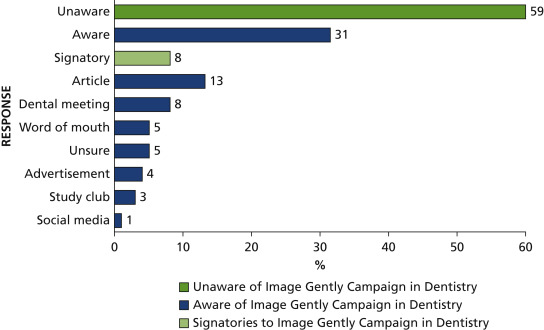To view the full text, please login as a subscribed user or purchase a subscription.
Click here to view the full text on ScienceDirect.
Abstract
Background
The authors conducted a survey of the American Academy of Pediatric Dentistry (AAPD) to determine awareness of the Image Gently Campaign in Dentistry (IGCD) and to ascertain radiologic practices, including radiation dose-reduction strategies such as rectangular collimation.
Methods
An institutional review board approved an electronic survey sent to 7,087 AAPD members covering practitioner demographic characteristics, radiographic techniques, and dose-reduction practices, including rectangular collimation. Responses were tabulated and analyzed using binomial tests, χ2 tests, and Fisher exact tests.
Results
A total of 1,124 pediatric dentists or residents in pediatric dentistry responded, (response rate 16%, margin of error ± 2.7%). The largest group (23.8%) graduated after 2010. More than 90% indicated that they followed American Dental Association (ADA)-AAPD radiation exposure guidelines, but only 33.5% were aware of IGCD. Almost all respondents used direct digital systems, storage phosphor plates, or both. Only 22.3% (n = 220) used rectangular collimation. Nonusers indicated that they were unfamiliar with collimation (33.3%) or concerned about potential for increased cone cuts (30.2%), 11.6% of respondents were unaware of any regulatory requirements for inspections of radiographic equipment recurring at regular intervals, and 4.1% of respondents considered use of lead aprons optional.
Conclusions
Although the pediatric dentists surveyed believe they are in compliance with ADA-AAPD guidelines, most are unaware of IGCD recommendations. Use of digital radiography is almost ubiquitous, but use of rectangular collimation is limited.
Practice Implications
Dentists treating children should be familiar with ADA-AAPD radiation exposure guidelines and should consider using the dose-reduction strategies recommended by IGCD.


